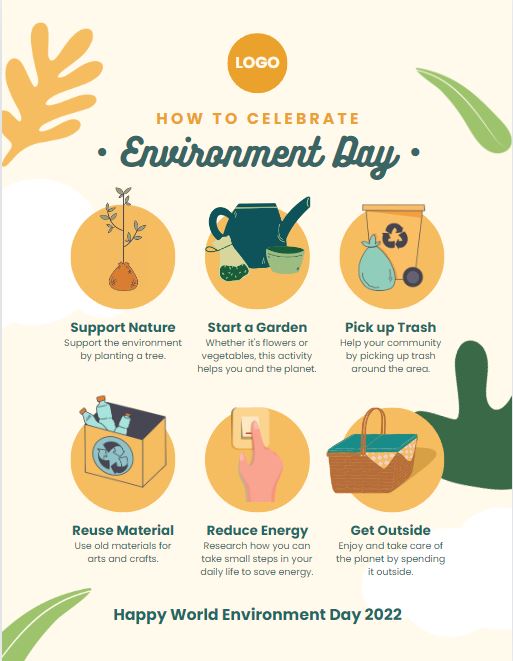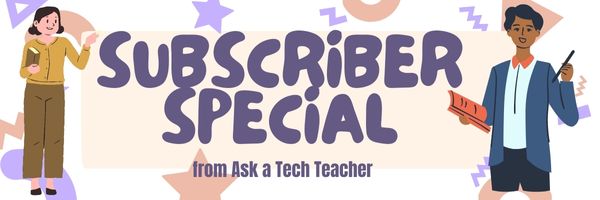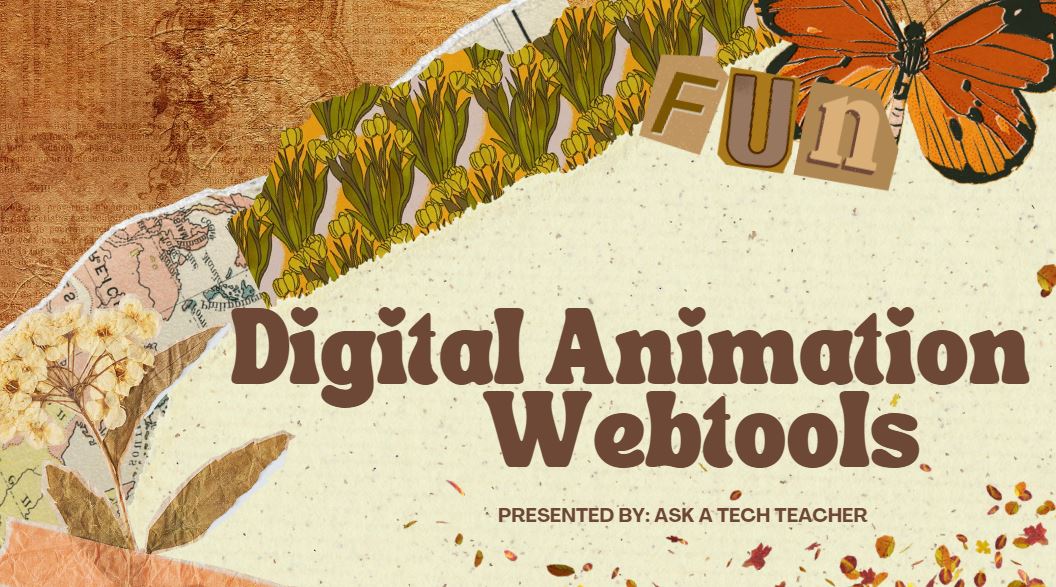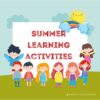Year: 2024
How to Help Students Run a Genius Bar
From the Ask a Tech Teacher team: ideas on a student-run genius bar:
How to Help Students Run a Genius Bar
Modeled after Apple’s popular tech support stations, a Genius Bar in a school setting is a student-run help desk where peers provide tech support, advice on digital tools, and assistance with various tech-related issues. Teachers play a crucial role in guiding students to run this service effectively, ensuring it becomes a valuable resource for the entire school community.
By providing the necessary support and structure, teachers can help students develop leadership, teamwork, and problem-solving skills through the Genius Bar. (more…)
Share this:
- Click to share on Facebook (Opens in new window) Facebook
- Click to share on X (Opens in new window) X
- Click to share on LinkedIn (Opens in new window) LinkedIn
- Click to share on Pinterest (Opens in new window) Pinterest
- Click to share on Telegram (Opens in new window) Telegram
- Click to email a link to a friend (Opens in new window) Email
- More
June is Internet Safety Month
June is National Internet Safety Month, thanks to a resolution passed in 2005 by the U.S. Senate. The goal is to raise awareness about online safety for all, with a special focus on kids ranging from tots to teens.
Here’s a short list of internet cautions I got from an online efriend a few years ago. I reprint it every year because it covers all the basics, avoids boring details, and gives kids (and adults) rules to live by:
Not everything you read online is true
It used to be anything we read in print was true. We could trust newspapers, magazines and books as reliable sources of information. It’s not the same with the web. Since anyone can become published, some of the stuff you’re reading online isn’t true. Even worse, some people are just rewriting stuff they read from other people online, so you might be reading the same false information over and over again. Even Wikipedia isn’t necessarily a reliable source. If you’re researching something online, consider the source. Some poorly written, random web page, isn’t necessarily a good source. However, if you find a .gov or .org site, the information has a better chance of being true. Always look at who owns the website and whether or not they have an agenda before considering whether or not certain information is true.
Share this:
- Click to share on Facebook (Opens in new window) Facebook
- Click to share on X (Opens in new window) X
- Click to share on LinkedIn (Opens in new window) LinkedIn
- Click to share on Pinterest (Opens in new window) Pinterest
- Click to share on Telegram (Opens in new window) Telegram
- Click to email a link to a friend (Opens in new window) Email
- More
What You Might Have Missed in May–What’s up in June
Here are the most-read posts for the past month:
- Books You’ll Want to Read This Summer
- Tech Tips to End the School Year
- AI has potential to upend student testing
- A Typing Website With a Twist
- 5 Innovative Tech Projects for High Schoolers
- How do you teach the hard to teach class? Watch the video.
- How to Track My Child’s Location
- 12 Innovative Digital Tools to Engage High School Students
- May Is Homeschool Awareness Month–Check our Subscriber Special
- Ethics and the Use of AI in Essays
Share this:
- Click to share on Facebook (Opens in new window) Facebook
- Click to share on X (Opens in new window) X
- Click to share on LinkedIn (Opens in new window) LinkedIn
- Click to share on Pinterest (Opens in new window) Pinterest
- Click to share on Telegram (Opens in new window) Telegram
- Click to email a link to a friend (Opens in new window) Email
- More
World Environment Day: Living Responsibly with Nature
World Environment Day, celebrated annually on June 5th, is designed for encouraging awareness and action for the protection of our environment. Established in 1972 by the United Nations General Assembly and first held in 1974, it has grown with participation from over 143 countries.
Significance
World Environment Day serves as a reminder of our collective responsibility to protect and preserve the environment. It encourages individuals, communities, and governments to take concrete actions towards sustainable development and to address critical environmental challenges like climate change, biodiversity loss, and pollution.
Activities and Impact
Mark the day with various activities such as:
- Educational events: Workshops, seminars, and discussions on environmental issues
- Clean-up campaigns: Community efforts to clean up litter and pollution in local areas
- Tree planting: Reforestation and afforestation efforts to combat deforestation
- Art and cultural activities: Exhibitions, concerts, and performances that promote environmental awareness
 Getting Involved
Getting Involved
People can get involved in World Environment Day by:
- Participating in local events: Join clean-up drives, tree planting, or educational workshops.
- Spreading awareness: Use social media to share information about environmental issues and advocate for change.
- Making lifestyle changes: Adopt more sustainable practices such as reducing plastic use, conserving water, and minimizing carbon footprints.
World Environment Day continues to be a vital platform for fostering environmental stewardship and encouraging global cooperation in the fight for a healthier planet.
Share this:
- Click to share on Facebook (Opens in new window) Facebook
- Click to share on X (Opens in new window) X
- Click to share on LinkedIn (Opens in new window) LinkedIn
- Click to share on Pinterest (Opens in new window) Pinterest
- Click to share on Telegram (Opens in new window) Telegram
- Click to email a link to a friend (Opens in new window) Email
- More
Subscriber Special: June Special Add-on with School License
Every month, subscribers to our newsletter get a free/discounted resource to help their tech teaching.
June 4th-6th:
Buy any K-8 School License
get 2 free print books of the grade level you purchased
(Please note: new orders only; domestic or freight-forwarders only)
Usually, you get one desk copy for each grade level included in your school license. Between June 4th-6th get two per grade level. That’s enough for a team to each have one.
To take advantage of this special, purchase from Structured Learning with PayPal or a PO. Email us (admin at structuredlearning dot net) with your proof of purchase. We’ll send the extra books.
What is a school license?
Benefits of a School License
- provide an overarching curriculum map for using technology in your school
- provide access to full text PDF from every digital device in your school, 24 hours a day. This maximizes productivity and student independence.
- enable flexible learning paths as students work at their own pace, with the ability to review or work ahead as needed
- share tech-in-ed pedagogy to infuse your school with technology
- enable teachers to vertically integrate with core grade-level teachers
- provide multiple authentic and organic formative and summative assessments
- provide free online Help via Ask a Tech Teacher (staffed by educators who use SL resources).
Benefits of School License for Students
- provide easy access to monthly lessons, how-tos, rubrics, project samples, practice quizzes, grade-level expectations, homework, images, and checklists (grade level Scope and Sequence and the Ready to Move On monthly keyboard workbooks lists, for example)
- provide full color instructions that can be zoomed in on for greater detail
- allow a convenient place to take lesson notes (using a PDF annotator)
- encourage students to be independent in their learning, work at their own pace. This is great both for students who need more time and those who ‘get it’ and want to move on
- enable a quick way to spiral up for quick learners or back to earlier resources for student needing to scaffold their learning
- prepare students for the rigor of end-of-year summative testing
Share this:
- Click to share on Facebook (Opens in new window) Facebook
- Click to share on X (Opens in new window) X
- Click to share on LinkedIn (Opens in new window) LinkedIn
- Click to share on Pinterest (Opens in new window) Pinterest
- Click to share on Telegram (Opens in new window) Telegram
- Click to email a link to a friend (Opens in new window) Email
- More
11 Online Resources About Animation
Creating animations for the web can be achieved using various tools, ranging from beginner to advanced, depending on your needs and expertise. Here are some webtools and tips to get you started:
Webtools
Beginner (more…)
Share this:
- Click to share on Facebook (Opens in new window) Facebook
- Click to share on X (Opens in new window) X
- Click to share on LinkedIn (Opens in new window) LinkedIn
- Click to share on Pinterest (Opens in new window) Pinterest
- Click to share on Telegram (Opens in new window) Telegram
- Click to email a link to a friend (Opens in new window) Email
- More
Harley Wade from State of Writing created 7 Tips for Creating a Budget in High School
It’s graduation time for High School seniors, that moment when they take over their own bills, budgets, and balancing income with outcomes. The Ask a Tech Teacher crew has some great times from Harley Wade on that subject:
Harley Wade from State of Writing created 7 Tips for Creating a Budget in High School
High school is the best time to start learning responsible financial management. If you get a grip on your financial literacy early, you will be able to handle your money more efficiently throughout your life. Financial literacy is defined as the ability to understand how to use financial tools, including personal financial management, budgeting, and investing. The following seven tips by Harley Wade from State of Writing will help high school students learn how to budget properly.
1. Understand Your Income Sources
The first step is figuring out how much money you’re bringing in. What does your parent(s) give you for allowance? How much money do you make from a job or a weekly babysitting or lawn mowing gig? Whenever you have a source of income, it’s good to know exactly how much you’re getting each month. This puts a strict limit on what you have to spend and what you realistically expect to save. (more…)
Share this:
- Click to share on Facebook (Opens in new window) Facebook
- Click to share on X (Opens in new window) X
- Click to share on LinkedIn (Opens in new window) LinkedIn
- Click to share on Pinterest (Opens in new window) Pinterest
- Click to share on Telegram (Opens in new window) Telegram
- Click to email a link to a friend (Opens in new window) Email
- More
Looking for Summer Activities? Try These
Earlier this month, we posted books you might like to read this summer. Now, we’ll focus on what do you want to accomplish with your summer? Here are popular AATT articles. Pick the ones that suit you:
How to Keep Learning Fresh Over the Summer
15 Skills To Learn this Summer and Use Next Year
6 Tech Activities for Your Summer School Program
12 Tech Tasks To End the School Year
Here’s How to Motivate Summer School Students
Seven Fun Math Activities for the Summer Break
How to Blend Learning with Play for a Kid-friendly Summer
6 Tech Activities for Your Summer School Program
15 Skills Teachers Can Learn this Summer and Use in Next Year’s Classroom
5 Apps to learn this summer
Share this:
- Click to share on Facebook (Opens in new window) Facebook
- Click to share on X (Opens in new window) X
- Click to share on LinkedIn (Opens in new window) LinkedIn
- Click to share on Pinterest (Opens in new window) Pinterest
- Click to share on Telegram (Opens in new window) Telegram
- Click to email a link to a friend (Opens in new window) Email
- More
10 Tips of Mastering Time Management as a Student
Effective time management will not only lead to success in achieving your goals, but also help you maintain your mental well-being. So, let’s learn more about it from the Ask a Tech Teacher team. Some of these tips you may already know, but others–never a bad time to save time.
10 Tips of Mastering Time Management as a Student
Introduction
Finding a proper balance between extracurricular activities, academics, social life, and personal interests can feel overwhelming.
And as human beings, most of us always want to make space for our loved ones too. However, unfortunately, we usually can’t achieve this because of not having enough time or not organizing our schedules properly. This is why effective time management is crucial for students.
It will not only lead to success and happiness in achieving your goals, but also help you maintain your mental well-being. So, let’s learn more about it. (more…)
Share this:
- Click to share on Facebook (Opens in new window) Facebook
- Click to share on X (Opens in new window) X
- Click to share on LinkedIn (Opens in new window) LinkedIn
- Click to share on Pinterest (Opens in new window) Pinterest
- Click to share on Telegram (Opens in new window) Telegram
- Click to email a link to a friend (Opens in new window) Email
- More
Books You’ll Want to Read This Summer
Summer is a great time to reset your personal pedagogy to an education-friendly mindset and catch up on what’s been changing in the ed world while you were teaching eight ten hours a day. My Twitter friends gave me great suggestions, but first:
A comment on the selections: I did get more suggestions than I could possibly list so I avoided books that involved politics or hot-button subjects that teachers are divided on and focused on positive and uplifting reading. Yes, there is a lot wrong with education around the world but I wanted a selection of books that would send me — and you — back to teaching in the fall with a can-do attitude for how to accomplish miracles with your next class of students.
Having said that, here’s a granular list of teacher-approved books to keep you busy this summer:
Digital Leadership: Changing Paradigms for Changing Times
by Eric C. Sheninger
Digital Leadership defines a strategic mindset and set of behaviors that leverage resources to create a meaningful, transparent, and engaging school culture. It takes into account recent changes such as connectivity, open-source technology, mobile devices, and personalization of learning to dramatically shift how schools have been run for over a century.
Disrupting Class: How Disruptive Innovation Will Change the Way the World Learns
by Clayton M. Christensen
Selected as one of Business Week’s Best Books on Innovation in 2008, Disrupting Class remains a worthy read. It is filled with fascinating case studies, scientific findings, and insights into how managed innovation can unleash education. Disrupting Class will open your eyes to new possibilities and evolve your thinking. For more detail, read my review, Disrupting Class.
Share this:
- Click to share on Facebook (Opens in new window) Facebook
- Click to share on X (Opens in new window) X
- Click to share on LinkedIn (Opens in new window) LinkedIn
- Click to share on Pinterest (Opens in new window) Pinterest
- Click to share on Telegram (Opens in new window) Telegram
- Click to email a link to a friend (Opens in new window) Email
- More




















































